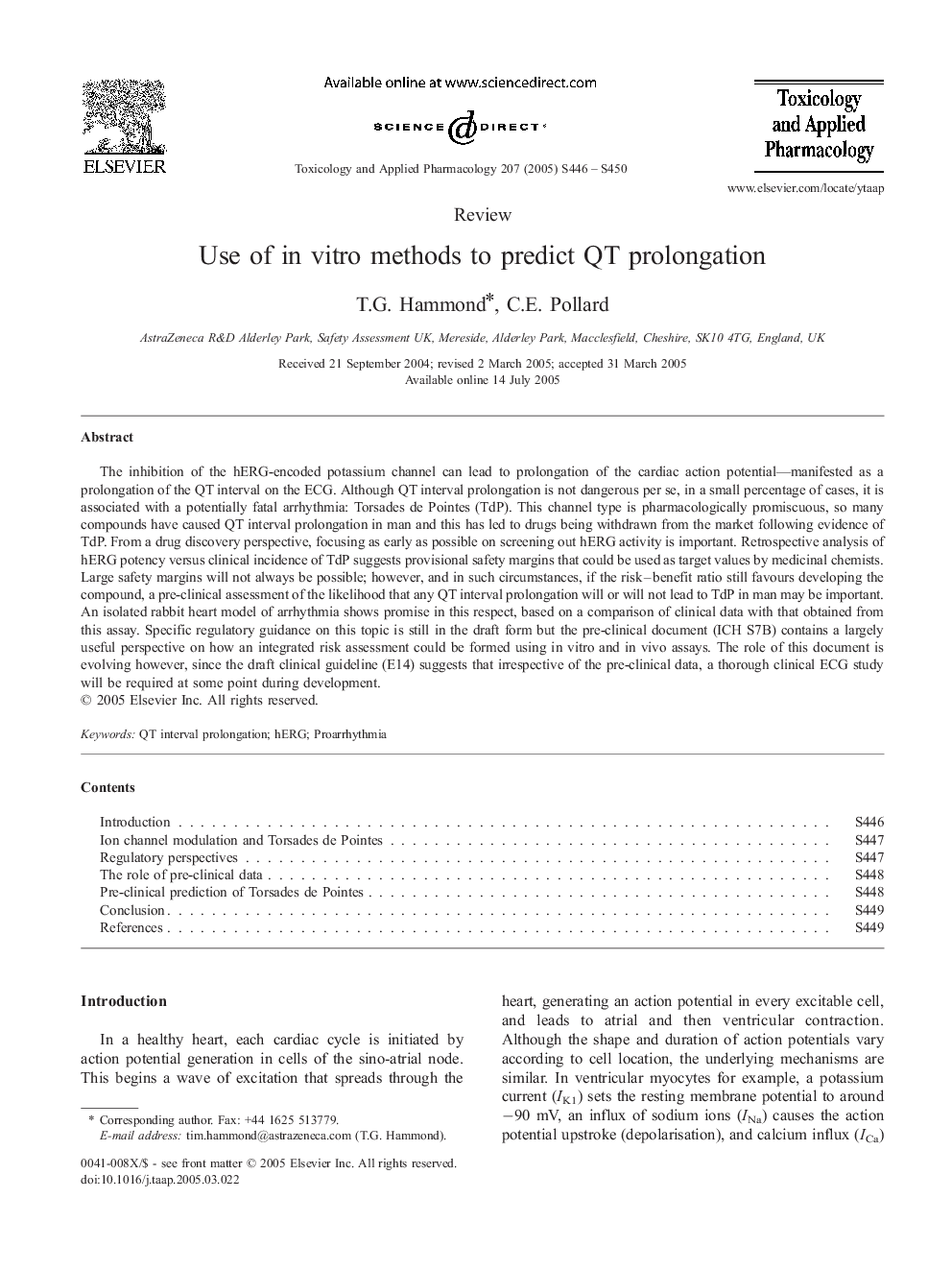| Article ID | Journal | Published Year | Pages | File Type |
|---|---|---|---|---|
| 9017776 | Toxicology and Applied Pharmacology | 2005 | 5 Pages |
Abstract
The inhibition of the hERG-encoded potassium channel can lead to prolongation of the cardiac action potential-manifested as a prolongation of the QT interval on the ECG. Although QT interval prolongation is not dangerous per se, in a small percentage of cases, it is associated with a potentially fatal arrhythmia: Torsades de Pointes (TdP). This channel type is pharmacologically promiscuous, so many compounds have caused QT interval prolongation in man and this has led to drugs being withdrawn from the market following evidence of TdP. From a drug discovery perspective, focusing as early as possible on screening out hERG activity is important. Retrospective analysis of hERG potency versus clinical incidence of TdP suggests provisional safety margins that could be used as target values by medicinal chemists. Large safety margins will not always be possible; however, and in such circumstances, if the risk-benefit ratio still favours developing the compound, a pre-clinical assessment of the likelihood that any QT interval prolongation will or will not lead to TdP in man may be important. An isolated rabbit heart model of arrhythmia shows promise in this respect, based on a comparison of clinical data with that obtained from this assay. Specific regulatory guidance on this topic is still in the draft form but the pre-clinical document (ICH S7B) contains a largely useful perspective on how an integrated risk assessment could be formed using in vitro and in vivo assays. The role of this document is evolving however, since the draft clinical guideline (E14) suggests that irrespective of the pre-clinical data, a thorough clinical ECG study will be required at some point during development.
Related Topics
Life Sciences
Environmental Science
Health, Toxicology and Mutagenesis
Authors
T.G. Hammond, C.E. Pollard,
